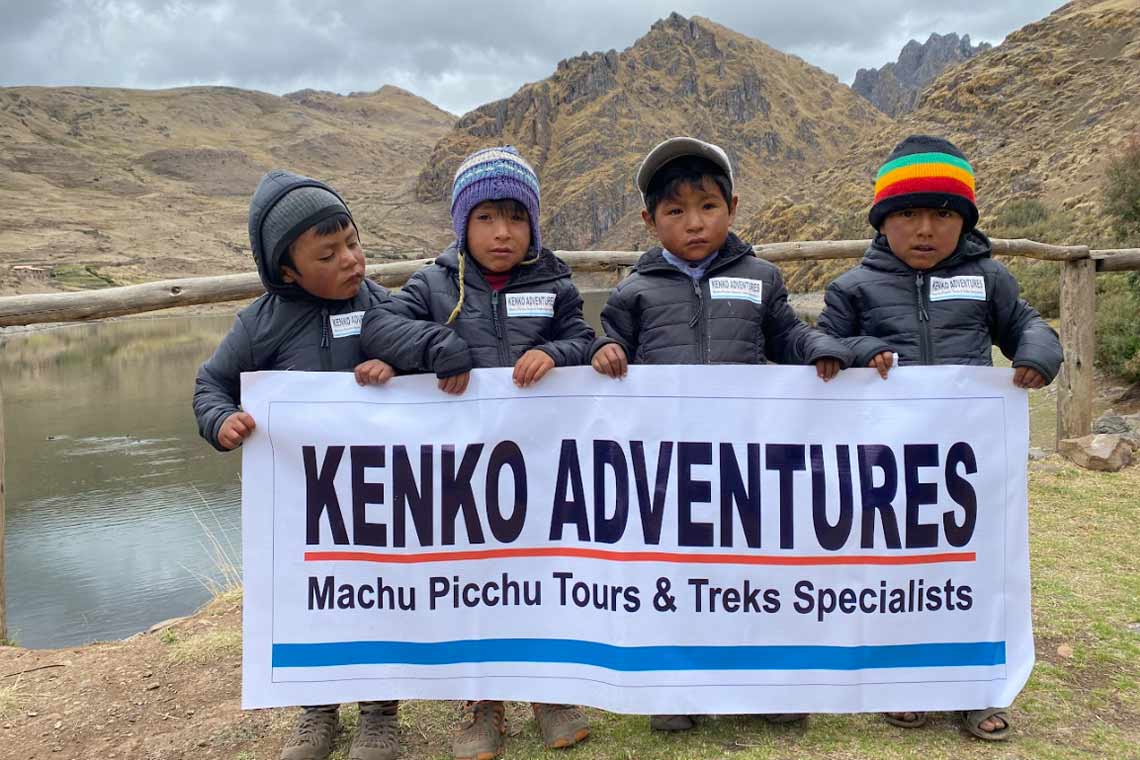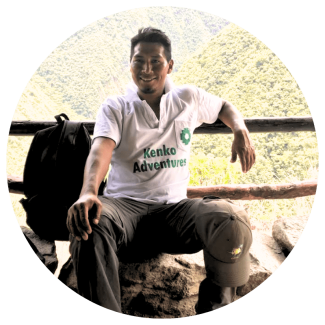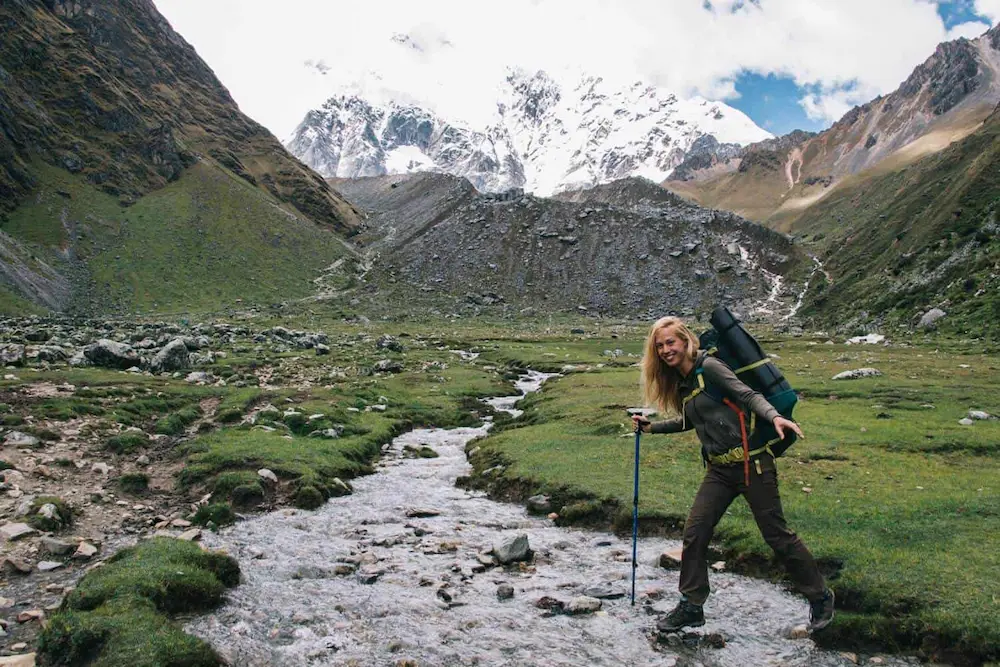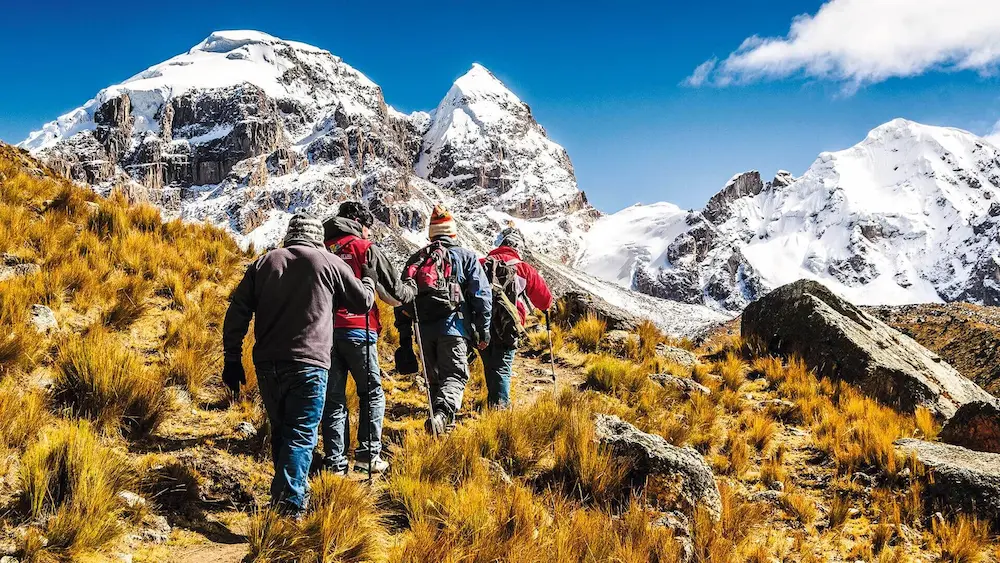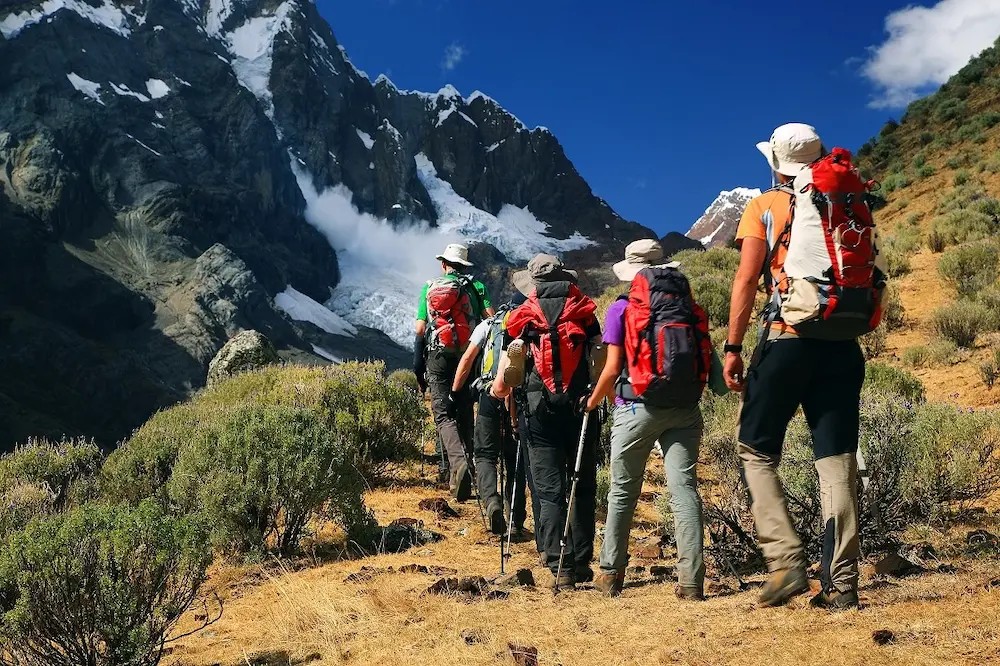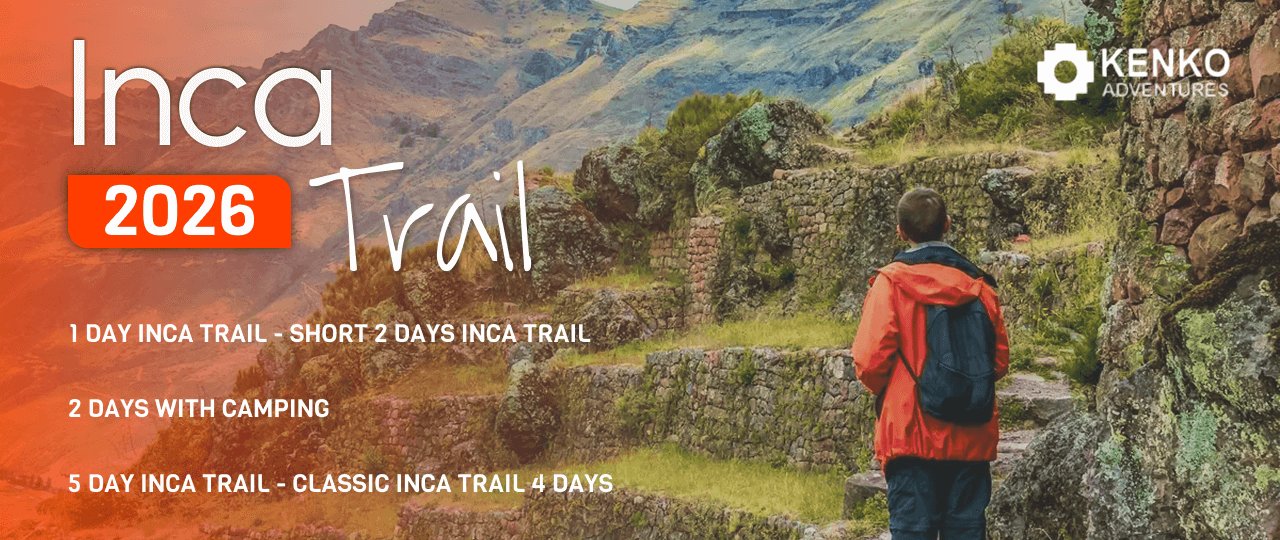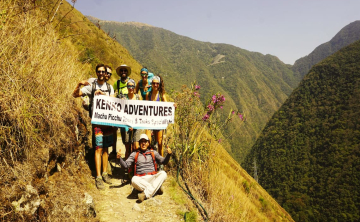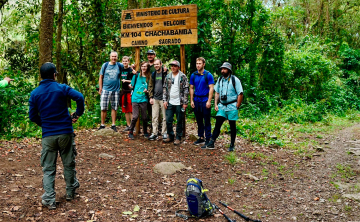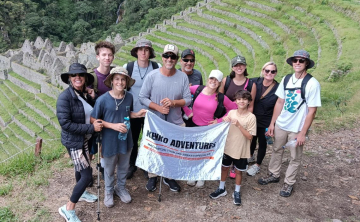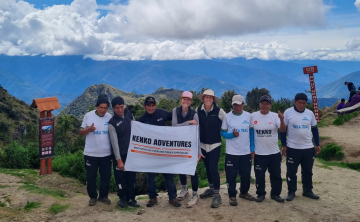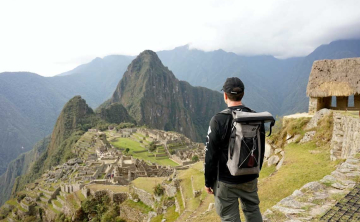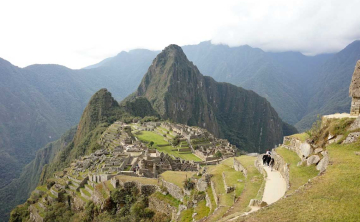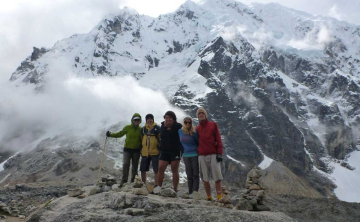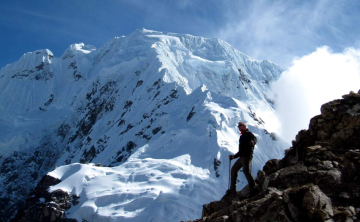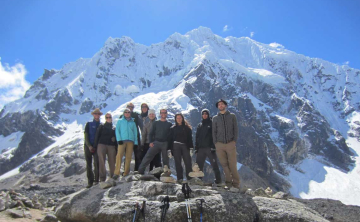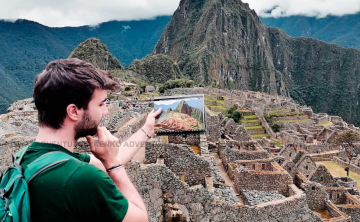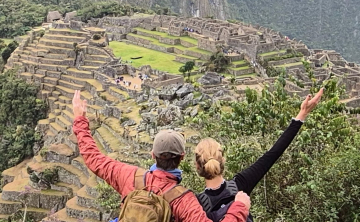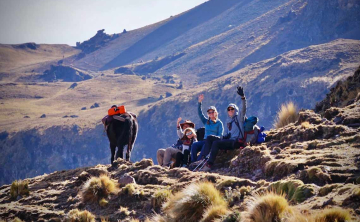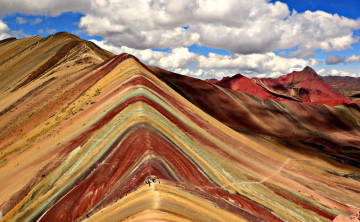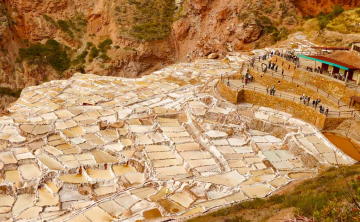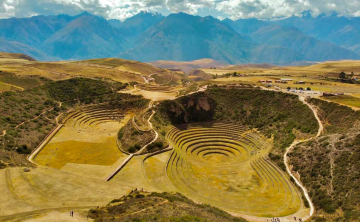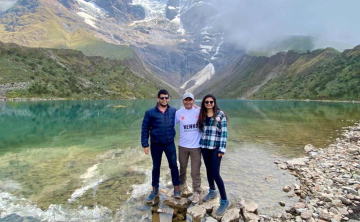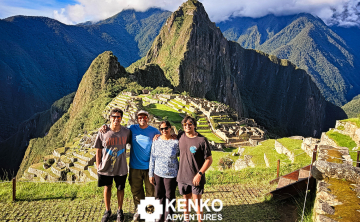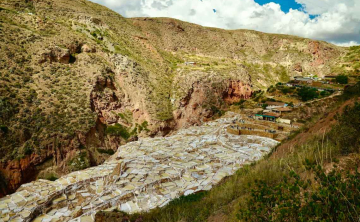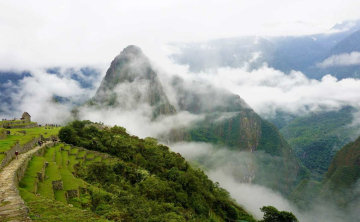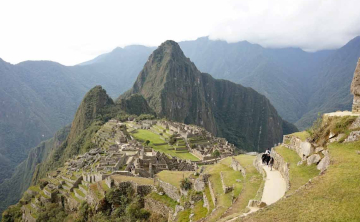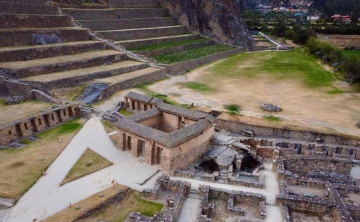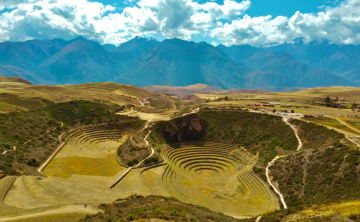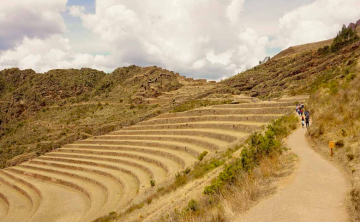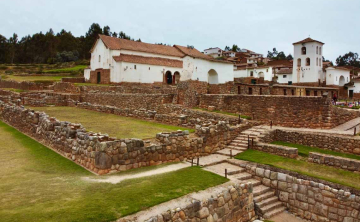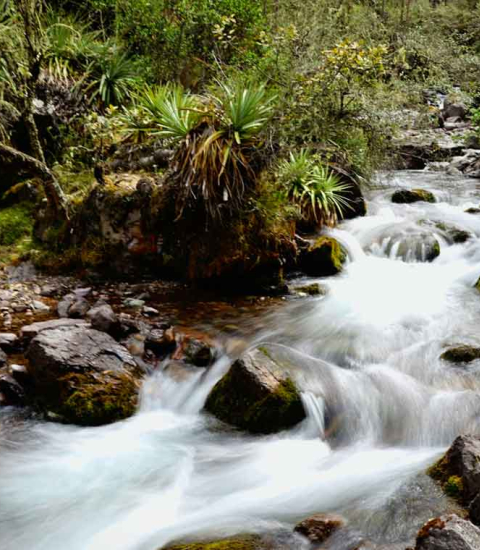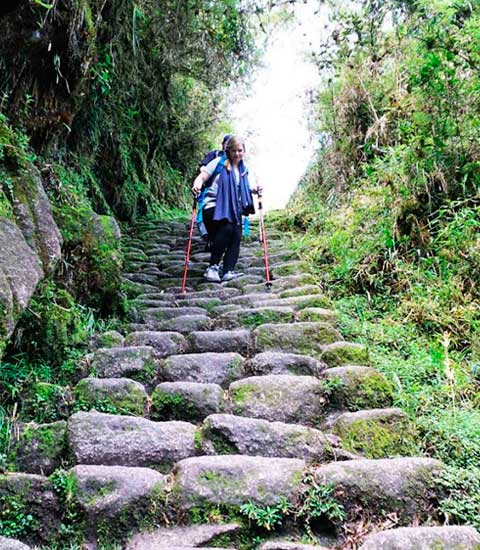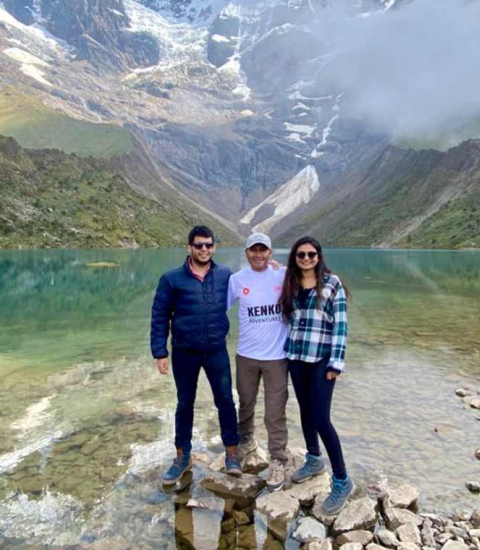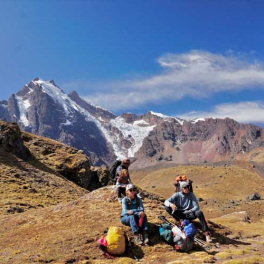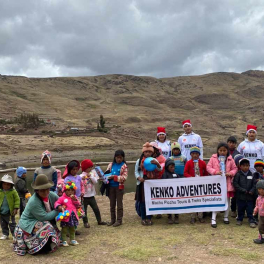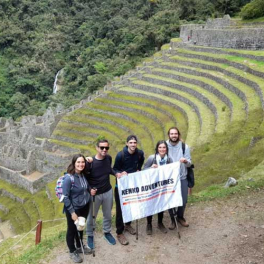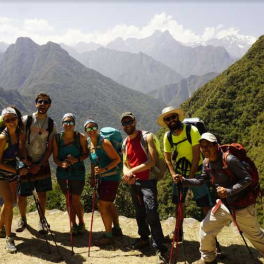We present our real culture life to our clients, hiring people from villages and communities of our region.
- Blog
- Trekking Tours In Peru: Tips For Conquering The Andes
Trekking tours in Peru: Tips for conquering the Andes
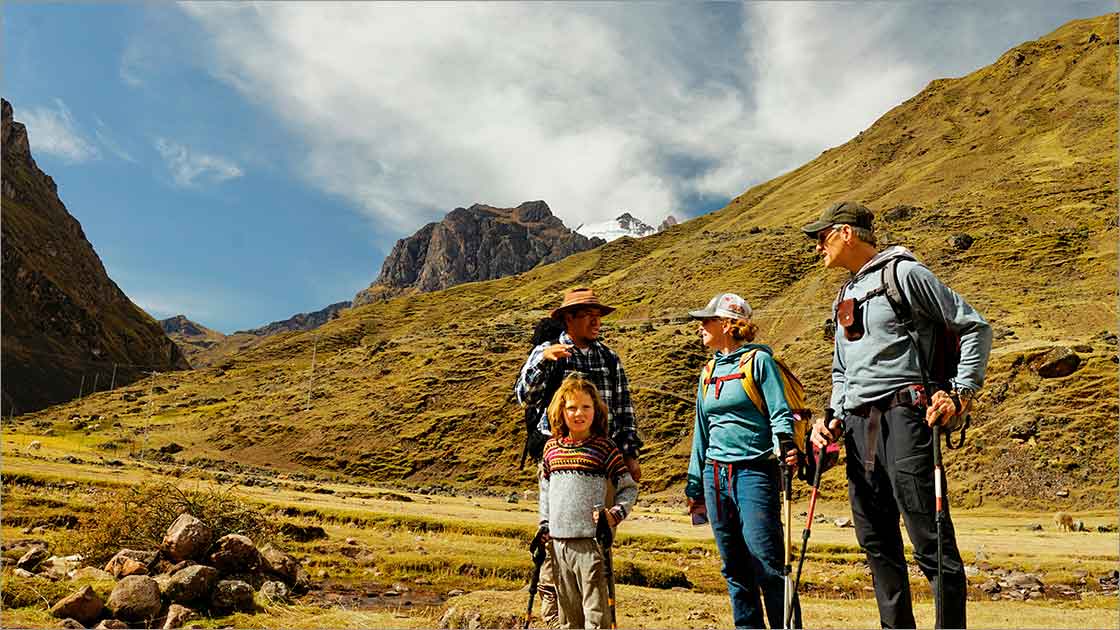
Every time I think about trekking tours in Peru I feel that spark of excitement: walking ancient trails, breathing the pure Andean air, and discovering breathtaking landscapes. But what makes this activity so special here? From the legendary Inca Trail to the majestic peaks of the Salkantay Trek, Peru is my personal paradise for adventure tourism. In this article, I’ll tell you what trekking is, how it transforms body and mind, and why Peru’s routes have me so hooked. Join me on this adventure!
Trekking or hiking? Let me explain the difference
When I planned my first trip to Peru, I wondered: is trekking the same as hiking? If you’ve had that question too, let me clear it up once and for all, because understanding it will help you choose the perfect experience in the Andes.
You might also want to check out: A guide to hiking to the Sun Gate (Inti Punku)
Key differences
Hiking is like a day trip I enjoy on well-marked trails with low physical demand. For example, when I visited Rainbow Mountain or strolled through the Sacred Valley, I was back in Cusco by sunset. On the other hand, trekking tours in Peru is an epic adventure: it lasts several days, requires specialized gear, and takes me through remote terrains. My experience on the 4 day Inca Trail or the Salkantay Trek, crossing mountain passes and camping under the stars, was next-level.
If you’re new to this, hiking is a great start. But if, like me, you want to dive into nature and challenge yourself, trekking tours in Peru will steal your heart.
When to use each term
I say “hiking” when I do short walks, like a one-day tour to Humantay Lagoon. But when I talk about multi-day expeditions, like trekking in Peru on the Inca Trail or Lares Trek, where I met Quechua communities and slept in the mountains, I use “trekking.” Knowing this helped me plan my trips based on my time and energy. Have you figured out which one you prefer?
How trekking changed my body and mind
I won’t lie: trekking is demanding, but every step is worth it. Every trekking tours in Peru I’ve taken has strengthened me physically and given me a peace I can’t find in the city. Here’s how.
My heart beats stronger
Walking steep trails, like those on the Salkantay Trek, gets my heart pumping hard. The altitude and rugged terrain challenge me in ways I never expected. Trekking in Peru, especially at heights above 4,000 meters, has not only improved my endurance and lung capacity, but also helped me better manage my physical health overall. I’ve read that high-altitude activities, like trekking, can reduce the risk of heart problems by improving circulation and cardiovascular strength. And I truly believe it. After every trek, I feel more energized and alive than ever. Plus, the feeling of burning calories while admiring glaciers, lagoons, and snow-capped peaks is a rewarding bonus. The physical challenge of trekking in Peru turns into a celebration of vitality and strength, and the stunning views along the way make the effort all the more rewarding.
Nature is my therapy
There’s nothing quite like disconnecting from the daily noise and simply listening to the sounds of nature in the Andes. When I walk the Inca Trail or rest by a river on the Lares Trek, all my worries melt away. The beauty of the landscape—whether it’s the towering peaks, lush valleys, or crystal-clear lakes—has a calming effect on my mind. In these moments, I feel fully present, my thoughts clear and peaceful. The sight of condors soaring above or watching the sunrise at Machu Picchu offers me a deep sense of tranquility that I can’t find in the hustle and bustle of everyday life. Studies show that being in nature can help lower stress levels and reduce anxiety, and I can vouch for that. In Peru, the mountains don’t just surround me—they embrace me. The beauty and serenity of the environment have a healing effect, allowing me to reconnect with my inner self. Have you ever felt that powerful connection with nature? There’s truly nothing like it.
Mental clarity and emotional resilience
Trekking in Peru’s high-altitude terrain also offers unexpected mental benefits. The solitude of the trail, the physical challenge, and the mesmerizing landscapes allow me to clear my mind. It’s as if every step helps me shed the weight of everyday life. The constant rhythm of walking, surrounded by vast, untouched beauty, brings a sense of emotional balance. I often find that during these treks, my mind is more focused, and I gain perspective on life’s challenges. Being away from the distractions of daily life gives me the space to think deeply, reflect, and grow stronger emotionally. There's a feeling of emotional resilience that builds over the course of the trek, a reminder that I am capable of overcoming obstacles, just like the ones I conquer on the trail.
A sense of belonging
One of the most profound changes I've experienced through trekking in Peru is a deeper sense of connection—not only to nature but also to the local cultures and communities. Walking through the remote valleys and meeting the Quechua communities on the Lares Trek has made me feel like I'm part of something much larger than myself. The simplicity of their lives, their deep connection to the land, and their wisdom about living harmoniously with nature inspire me every time I interact with them. Trekking in Peru is not just about physical endurance but also about forming emotional bonds with the landscapes, cultures, and people that call this extraordinary place home.
You might also want to check out: The Inca Culture History
Why Peru is my favorite trekking destination
Peru isn’t just a place on the map; it’s an experience that has deeply impacted me. Its world-renowned trekking routes offer an incredible mix of adventure, history, and culture that you can’t find anywhere else. Whether it's walking in the footsteps of ancient civilizations or immersing yourself in nature's beauty, trekking in Peru has become a passion that I can't seem to get enough of. Let me share with you why trekking in Peru is so captivating and why it holds a special place in my heart.
Routes that left me speechless
The Inca Trail is undoubtedly my absolute favorite. This iconic 43-kilometer route to Machu Picchu is like stepping back in time, as I walk along ancient stone pathways surrounded by Inca ruins and lush cloud forests. The most challenging part is crossing the Warmiwañusca Pass, also known as Dead Woman’s Pass, at 4,215 meters. The steep climb tests my limits, but the reward is worth every step. Each day along the trail brings new surprises, whether it’s visiting the Llactapata citadel, gazing at the vibrant views of the Sacred Valley, or the unforgettable moment when I catch my first glimpse of Machu Picchu at sunrise. It’s a memory that stays with me forever.
But my adventure doesn’t stop there the Salkantay Trek captured my heart in a different way. With its 74 kilometers winding through majestic mountains, this trek takes me beneath the towering Salkantay snow-capped peak, through valleys and meadows, and past turquoise lagoons that look like something out of a dream. The feeling of walking beneath such massive natural wonders fills me with awe and admiration.
If you’re looking for something that’s both cultural and scenic, the Lares Trek is the perfect option. It takes me through remote valleys, where I can meet and connect with Andean communities who still live the traditional ways of the Incas. Sharing a cup of coca tea with these locals and learning about their culture, textiles, and life on the mountains is an experience I will never forget. And if you’re in a time crunch but still want to see something incredible, Rainbow Mountain offers a breathtaking spectacle. The colorful slopes of this mountain have earned their reputation as one of Peru's most stunning natural wonders.
All of these routes, each with their unique appeal, are just a short distance from Cusco, making Peru the epicenter of adventure tourism for me. The variety of landscapes, the rich history, and the diversity of cultures encountered along these treks make this country my ultimate trekking destination.
Landscapes and cultures that inspire me
Trekking in Peru isn’t just about putting one foot in front of the other; it’s about immersing yourself in the vibrant Andean culture. Along the Lares Trek, I shared moments with Quechua weavers, who taught me their time-honored techniques and shared stories of their ancestors. The kindness of these mountain communities and their deep-rooted connection to their heritage left a lasting impact on me. Every interaction felt like a window into the soul of the Andes.
On the Inca Trail, every stone along the path tells a story of the Inca Empire’s greatness, reminding me of the ingenuity and endurance of this ancient civilization. The knowledge that I was walking in the footsteps of the Incas made every step even more meaningful. Machu Picchu, of course, is the highlight of this trek, but the entire experience is enriched by the historical significance of the trail.
The landscapes of Peru are nothing short of spectacular, and trekking through them has given me a deep appreciation for the power of nature. From the towering, snow-covered peaks of Salkantay to the lush, green valleys of the Sacred Valley, every landscape offers its own unique beauty. And then there’s Vinicunca, also known as Rainbow Mountain, where the vibrant hues of the mountain form a stunning contrast with the deep blue sky above. It’s as if the land itself is telling a story of the Earth’s evolution.
Tasting pachamanca, an ancient Andean dish cooked underground, or hearing about the Andean worldview as I trek through remote valleys has made me feel deeply connected to the land and its people. Every meal, every encounter, and every step along the trail reminds me that trekking tours in Peru is not just a physical journey; it’s a journey of the soul. Peru has so much to offer, and each trek is a new chapter in an unforgettable adventure.
You might also want to check out: Best restaurants in Cusco | Top 20
How i prepare for trekking in Peru
If you’re thinking about taking on the adventure of trekking in Peru, then you’re in for an unforgettable experience. The Andes offer some of the most beautiful and challenging trekking routes in the world, and with a little preparation, you’ll be ready to conquer them just like I do. Here’s how I get ready for my trekking adventures in Peru.
I acclimate to the altitude
Cusco sits at an elevation of 3,400 meters, and many of the trekking routes in Peru, such as the Inca Trail and the Salkantay Trek, reach altitudes over 4,000 meters. This can be challenging if you're not used to high altitudes, so acclimatizing is key. I always spend 2-3 days in Cusco first, allowing my body to adjust to the thinner air. During this time, I make sure to drink coca tea, a local remedy to help with altitude sickness, and stay well-hydrated. I take things slow during these days, avoiding heavy physical exertion, so my body can adapt to the altitude without issues. Proper acclimatization is one of the most important steps to ensuring you have a safe and enjoyable trekking experience in the Andes.
I train beforehand
Trekking in Peru is physically demanding, and I make sure to train before embarking on my journey. To prepare, I do long walks with a backpack, mimicking the weight I’ll carry on the trail. I also focus on leg strength by climbing stairs or finding local hills to hike up. This helps me build endurance and prepares my legs for the steep ascents and descents I’ll face on the trail. If you don’t have mountains or steep terrain near you, you can practice with any local trail or even stairs at home. Strengthening your legs and increasing your stamina is essential, as the altitude and rugged terrain of Peru will challenge your body in ways that flat trails don’t.
I pack the essentials
Packing the right gear is crucial to staying comfortable and safe on the trail. I always pack layered clothing, as the weather in the Andes can change rapidly, with hot days and cold nights. I wear trekking boots with good grip to ensure I have firm footing on rocky or slippery paths, and a sleeping bag for the chilly nights in the mountains. At high altitudes, the sun can be intense, so I never forget to bring sunscreen to protect my skin from UV rays. A trekking pole is another essential for me, especially when descending. It helps protect my knees and gives me better balance when walking on uneven terrain. I also pack a first aid kit, snacks, and plenty of water to stay hydrated during long treks. Being well-prepared means I can focus on the beauty of the trek rather than worrying about what I’ve forgotten.
I choose the best season
The weather plays a big role in the trekking tours in Peru. I prefer to trek during the dry season, which runs from May to September. During these months, the skies are clear, and the trails are less muddy, making for easier and more enjoyable hiking conditions. It’s the peak season, so it’s important to plan ahead. For popular routes like the Inca Trail, I book 6 months in advance, as permits tend to sell out quickly. Booking early ensures I secure a spot and avoid the hassle of last-minute changes. Additionally, trekking during the dry season means I’m more likely to enjoy unobstructed views of the majestic Andes and iconic landmarks like Machu Picchu.
I trust local guides
A knowledgeable local guide is one of the most valuable assets during any trek in Peru. I always choose a guide who speaks Quechua and is deeply connected to the local culture. A good guide not only ensures my safety but also enriches the experience by sharing local stories, history, and insights about the places I’m visiting. They know the best photo spots and can take me to hidden gems that I wouldn’t discover on my own. The best guides bring the trek to life, making it more than just a physical journey—they help me connect with the history and culture of the Inca Empire and the Andean people. Their expertise and knowledge make every step of the trail more meaningful.
You might also want to check out: History of Pisco Sour and Recipe
Now that you’re ready...
Now that you know how I prepare for trekking tours in Peru, you’re one step closer to your own adventure. With the right preparation, you’ll be ready to explore the Andes, immerse yourself in Peru’s rich culture, and experience the incredible beauty of the country’s famous trekking routes. Whether it’s hiking the Inca Trail, the Salkantay Trek, or the Lares Trek, Peru offers an unforgettable experience for every adventurer.
So, are you ready to take the first step? The Andes are waiting to share their secrets with you. See you on the trail!
Why Kenko Adventures?
We offer unique services like: hot shower and private toilets on treks. We have a real responsibility taking care of our planet.
Experts on: Inca Trail hikes and Machu Picchu Hiking Tours. We operate small groups.
Superior Quality services and full flexibility for any changes in this pandemic
Free warm jacket for my litle friend!
Kenko Adventure Peru founder decided to add a social proyect in all Our tours that means, if you are booking a tour with Us, you automatically are donating a warm jacket for Our litle kids that have very hard living in very cold conditions near by the Andes Mountain
